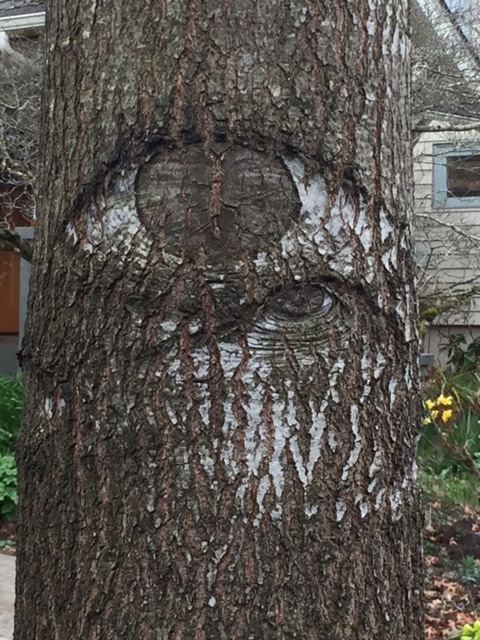
If a dreamer describes a dream figure simply as “someone” or “a person,” one of the first questions to ask is typically “Male or female?” The answer, however, is often, “I’m not sure—Maybe female?” or “Maybe male?” Gender can sometimes be difficult to pin down in dreams. But perhaps that’s because gender is actually a more fluid concept than we tend to think. Because rigid binary categories exist in our culture, people and animals (and, in some languages, objects as well) get assigned to those categories. Of course, there’s a gender revolution happening all over the world these days, and more genders than the most familiar two are gaining wider recognition. Are our dreams reflecting this increased recognition of gender diversity? Or have dreams, perhaps, been gender diverse all along, and it is only now that we are being called upon to acknowledge—or at least notice—that things aren’t as binary as we believed? Though simplistic ideas about identity may have dominated our thinking until recently, it seems pretty clear that diversity and fluidity have always existed, in our dreams as well as in the waking world.
I’ve been trying to notice my own gender biases in dreamwork, as I’ve been questioning those biases in waking life. In the process, I’m feeling more creative as a dreamworker, and freer as a human being. Any trend that shifts our “us-and-them” categories can potentially be healthier for all of us, though we have to be willing to feel uncomfortable at times. If there are more kinds of categories, we are less likely to identify too exclusively with any one way of being. We’re also more likely to find that every “unique” personal challenge we face is, almost certainly, shared by lots of other people in this multifaceted world. It’s meaningful to embrace the identity that seems to fit best (and the communities that form around that identity), as long as we hold our categories lightly, recognizing that we are defined by much more than any single self-concept.
In dreams, it’s quite common for dream figures to be maybe-male, maybe-female, maybe-both/neither. They might be maybe-old, maybe-young, maybe-ageless or age-shifting. They might also be human-but-also-cat, or tree, or robot, or shape-shifting. In most dreams, I don’t actually know exactly what or who I am, unless someone asks me (in the dream or afterward) and then I feel obliged to decide. In some languages, people, animals, and objects are described by verbs rather than nouns: it’s not what you are, it’s what you’re being. I suspect that a dream-like strangeness represents something very close to the true nature of reality: at a fundamental level everything is movement and change, in shifting patterns of interrelated energies. When you look for an “elementary particle” you find “there’s no there there.” We are not static identities, we are life itself, living.
But, in a world where categories do exist, we’re often called upon to define and redefine ourselves. Wouldn’t it be great if this could be playful, rather than a struggle? If some categories weren’t privileged over others, we might all enjoy experimenting rather than settling down with one identity absolutely. What if we approached dreamwork this way? In my ideal dream world, “beings” are not assigned absolute categories—they’re just being and doing whatever they are being and doing, interacting with one another and changing one another in the process. Maybe we need a kind of dreamwork that leaves more room in our minds to ask questions without definite answers.
In waking life, I’ve been defined as female, but I never really felt female. I’ve been mistaken for male, but never really felt male. I’ve identified as a lesbian, but how can I define myself as a woman-attracted-to-women when our society’s understanding of “woman” doesn’t fit either me or my spouse? Now that there are more possibilities that more people are likely to recognize, I’ve become aware that a “nonbinary” gender identity describes me better than “female” or “male” ever could. “Nonbinary” was not a concept that was available to me when I was growing up, but, in my dreams and in the life I’ve lived, I’ve been nonbinary all along.
If you look back at some of your own dreams, perhaps you’ll notice that you are not always sure of the gender of every dream figure. Perhaps you’ll notice that you can’t always pin down your own gender, or age, or even species. Perhaps you are only a point-of-view in the dream rather than a distinct character at all. When writing down a dream or telling it to others, we have to use pronouns, which makes it more difficult to convey the actual dream experience, limiting our imaginations when it comes to finding that dream meaningful. Similarly, once we have assigned a particular identity to an individual we meet in waking life (even if the identity fits, and the person embraces it), we relate to that individual through the filtering lens of the identity, and this limits our capacity to respond spontaneously, naturally, and creatively to the relationship dynamic as it unfolds. Since our physical existence and even our dream lives depend on subject/object distinctions, we may need to create categories in order to have experiences at all, but those categories don’t need to be as rigid as we tend to make them.
Notice how awkward it is to pin down gender in this dream fragment:
I’m staying in a big house where I’ve been assigned a tiny room. Holly is staying in a nearby room with several bunkbeds and room-mates. I want to get permission from the landlord (or landlady?) for her (Holly) to sleep in my room with me, even though we’d have to share a narrow cot…. Later, we’re sitting outside under a big tree.
In working with the dream, I become aware that my awkward way of identifying the landlord/landlady and Holly might not be accidental: there’s meaning in the difficulty of assigning genders, just as there’s meaning in the room assignments Holly and I have been given. When I stop focusing on defining terms (deciding how to describe the one who owns the house, or the one who belongs in a particular room), I remember the actual emotions and sensations: the smallness of my room, the crowdedness of Holly’s room, the narrowness of the cot, the need to get permission to share a bed with my own spouse. In the end, I give myself permission, and relax a little. Instead of sleeping on that cot, we can move on into the next phase of the dream and enjoy the fresh air together. There’s freedom in deciding not to decide, in letting go of the dilemma of who gets to choose and who sleeps where.
The next time you get caught up in a confining dream or a defining identity, try giving yourself permission to relax a little. I’ll meet you outside, under that big tree.
[This article was originally published in in the Fall, 2023 issue of DreamTime Magazine. If you enjoyed it, please consider subscribing to DreamTime by joining the International Association for the Study of Dreams ]












